Armament special forces. Overview of technology and products from a Western specialist (part of 2 from 2)
In most cases, the SSO units are simply equipped with short-barreled / folding or compact carabiner variants of standard assault rifles with telescopic butts, they are perceived as more suitable for special operations, despite their inherent losses in actual range, accuracy and penetration. More recent examples of variants specially created for non-traditional combat could be, for example, Colt CAR-15 (later M4 COMMANDO / XM177) and Russian AKSU-74. The latest development is the Israeli IWI GALIL ACE, based on the proven mechanisms of the GALIL rifle, but with a camera for the 5.56-mm cartridge, it is equipped with a telescopic butt. ACE is available with three trunks of different lengths.
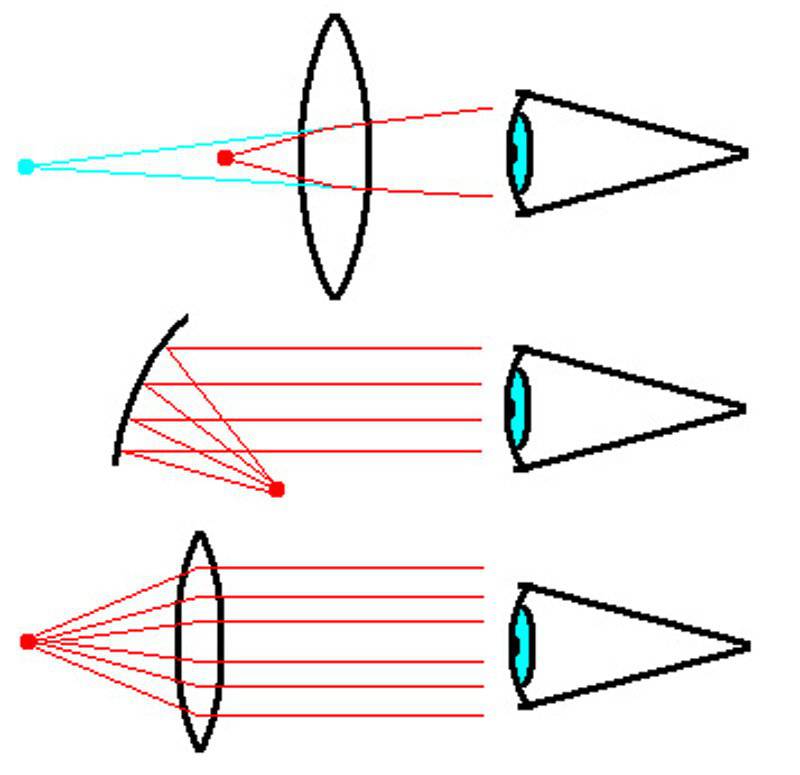
The principle of the collimator sight. A lens is used to create a virtual image (top) of a red object. Due to the collimation of the image using a reflective lens (in the middle) or a refracting lens (bottom), the image can be projected to infinity
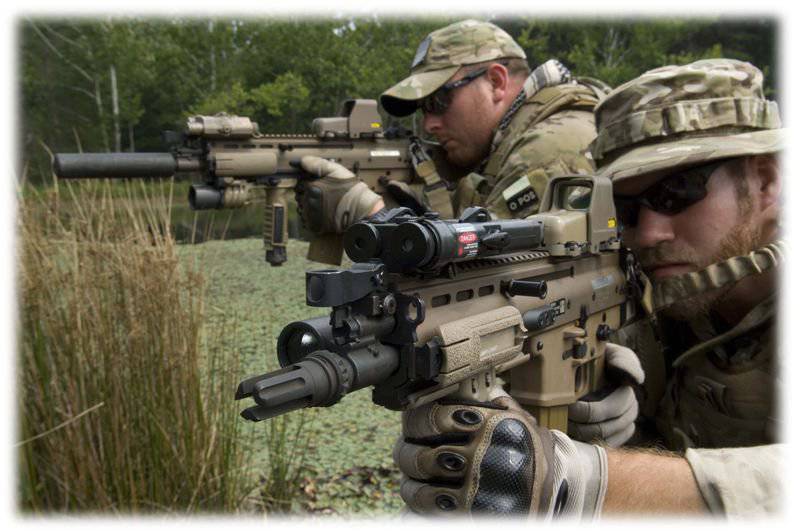
At the start of 2004, the US Special Operations Command issued a SCAR (Special Forces Combat Assault Rifles) requirement for a family of combat assault rifles for MTR. The basis of the requirement is two different calibers, high interchangeability of parts and identical ergonomics. After the first tests in the preliminary selection, the SCAR system developed by FN Herstal, remained the first and only choice of command. The SCAR system consists of two well-adapted modular rifle platforms, i.e., NATO NATO SCAR-Light (or SCAR-L) 5.56x45 and NATO SCAR-Heavy (or SCAR-H) 7.62x51 mm, and an improved grenade launcher (EGLM or FN40GL). Both SCAR platforms are available with two trunks of different lengths: a CQC melee barrel and a standard barrel for longer distances.
The search for US military personnel of increased combat flexibility led, first, to the development of the so-called SOPMOD kit (Special Operations Peculiar Modification - a special modification for special operations), it consists mainly of commercial ready-made accessories for the M4 karabiner. Although originally developed by the SSO command for itself and issued to special forces personnel, the SOPMOD kit quickly became very popular among infantry units, partly because of its inherent advantages, but also partly because of some "mystery of the SSO."
However, in 2003, the USSOCOM command - also using the growing interest in MTR due to the brilliant results of their use in the open phases of Operation Permanent Freedom - decided to move on with SOPMOD and launched a bold program for a new assault rifle specially designed for its individual requirements - SCAR ( SOF Combat Assault Rifle - combat assault rifle for MTR). Initially, it was conceived as a multi-caliber modular system capable of using (of course, by replacing the barrel and other main parts) not only Western ammunition samples, but also Russian cartridges “freed” after the operation, but since then practical considerations have led to a narrowing of the choice : cartridges are either 5.56 mm or NATO standard 7.62 mm. FN Herstal, operating through its US subsidiary FNH, has developed a new family weapons in an incredibly short period of months in 10, and after a series of comparative tests won the corresponding contract.
The exceptional flexibility of SCAR will allow USSOCOM personnel to configure their weapon as a very compact 5.56-mm carbine for city combat on the one hand and as an 7.62-mm reconnaissance carbine with high-precision long-range fire from the other. There will also be an option “H” (Heavy - heavy) to increase the penetrating power. In practice, USSOCOM, thus, cut the Gordian knot of the alleged insufficient mortality of 5.56 mm cartridges due to simple reception, that is, if necessary, the transition to the old 7.62 mm cartridge.
SCAR is the only Western assault rifle designed specifically for use by the SSO and adopted for service. In USSOCOM, it must replace five types of weapons: Mk18 CQBR, M4A1, Mk12 SPR, Mk11 SASS and Mk14 EBR.
You can consider a special category as an intermediary between the SMG and assault rifles, although in technical terms it will be more accurate to say that this is a variant of the latter. It is represented by a weapon that is available in 5.56 mm and 9 mm options, or more interestingly, the user can easily switch from one caliber to another. The main logic of this two-caliber weaponry is to simplify logistics, it will also allow training on one weapon, while providing a flexible solution for the personnel of the SSO.
A typical newest example of this class is the IWI X95, based on the TAVOR assault rifle. It is interesting to note that IWI originally developed and promoted only 9-mm weapons, known as Mini-TAVOR, to the market. This was a requirement of the Israeli SSO, which led to the fact that the Mini-TAVOR was abandoned and it was replaced by a two-caliber model.
The SSO units were the initiators and first users of the currently popular large-caliber long-range rifles to defeat manpower and materiel. The picture shows McMillan TAC-50 in service with US MTR
IWI X95 - a typical rifle from a special category of two-caliber weapons. Allows you to quickly move from the cartridge 5.56x45 to the cartridge 9x19 in accordance with the operational task
The Mk11 sniper rifle with a silencer was originally developed for an MTR based on a commercial product; Since then, the US Army has also been adopted.
Unlike other military units, the MTR soldiers have a huge interest in pistols and do use them. The picture shows a Heckler & Koch HK45 pistol in action
Sniper rifles
The SSO units often use the same sniper rifles with a sliding bolt, which are adopted by the army, despite the fact that they could get better (and more expensive) optics on occasion. Another question, however, is the muffled sniper rifles, which usually have little interest in the army (but now it is changing, as evidenced by the new M110 SASS for the American army), but extremely important for MTR activities. The Finnish Vaime SSR Mk1 (7.62 mm of NATO) is a very popular design, while other models have appeared, such as Accuracy International AWC Covert with a folding butt (a rare solution for sniper rifles) and a removable receiver / built-in silencer to facilitate transport, which is rumored to be armed with the 1 th SFOD-D (Delta Force group) as part of USSOCOM, the British 22 SAS rifle, and a similar French PGM Ultima Ratio / Suppressed. It is necessary to understand that the real jamming requires subsonic cartridges (either due to the construction or operation of the silencer), which sharply reduces the maximum range of damage to 200 – 400 meters.
However, based on the nature of their tasks, MTR snipers are much more likely to use semi-automatic rifles; This has led in many cases to the adoption of extended-modification kits for existing rifles or models specially designed for the SSO. A typical example is the Mk12Mod0 / 1 SPR (Special Purpose Rifle - rifle for special purposes) with the NATO 5.56 mm cartridge, created by the Crane Division division of the US Navy Surface Weapons Research Center. It is based on the AR15 / M16 case, but it is complemented by prefabricated parts, including primarily a stainless steel 18-inch heavy rifled barrel with a floating mount, developed by Douglas Barrel and the M4 Company guide rail from Knights Armament Company. SPR, is in service with the units of the special operations forces of the Navy SEALS, optimized for the Mk262 cartridge with a 77 g bullet (Mod 0 = HPBT, Hollow Point Boat Tail (a cartridge with a notch in the head section and with a tapered tail section), Mod 1 = OPM, Open Tip Match (increased accuracy)).
Before developing the SPR, USSOCOM introduced the Mk11Mod0 sniper rifle with a NATO 7.62 mm cartridge. This is a modified version of the design of the SR-25 from KAC, it has also recently been adopted by the US Army along with the M110 SASS rifle (with minimal additional modifications).
Let us turn to Russia. The SVD-S is a variant with a folding butt of a widespread SVD Dragunov sniper rifle with a cartridge 7.62x54R. Originally designed for parachutists, it was also adopted by special forces. More specific to the SSO design is the VCA-OT 03, introduced in the 1991 year. This weapon is a bullpup circuit (shock trigger and bolt carrier located behind the fire control knob (inside the butt)) on the SVD base, but having a shorter barrel, while the VCA-A variant has a fully automatic mode. Reportedly, the special forces are intrigued by the compactness of the weapon (total length 900 mm, weight 4 kg without accessories).
In general, the MTR units were the inventors and the first users of large-caliber weapons for the destruction of people and materiel at long distances, which has since become extremely popular in the armies of the whole world. Also, the requirement formulated by the marine special forces in 1983 for the intermediate cartridge between 7.62 mm NATO and 12.7x99 (.50 BMG), which would allow shooting more accurately at distances up to approximately 1200 – 1550 m, led to the subsequent introduction and wide distribution of the magnificent cartridge. 338 Lapua Magnum (8.6x70). The Barrett M82A1 / A3 is definitely an 12.7-mm rifle to defeat a material piece that is very widespread throughout the world, while European models could include Accuracy International AW-50 (AS-50 is a semi-automatic version) and PGM HECATE II. Very interesting Russian design, specially designed for the FSB. This is a semi-automatic bullpup rifle. It is equipped with a silencer built into the barrel, a unique subsonic cartridge CTC-130T 12.7 mm (sleeve length unknown) with a monolithic bronze bullet weighing 900 – 1200 grams was created for it.
Machine guns
While it does not exist specifically for MTR light (LMG, that is, 5.56 mm NATO) or universal (GPMG, 7.62 mm NATO) machine guns, but again the MTR fighters have an irresistible desire to modify and adapt any weapon that they could take into their arms.
For example, in 2000, the USSOCOM, after a long process of testing and testing, adopted the Mk46Mod0 LMG as a deeply modernized version of the M249 LAW (FN Herstal MINIMI) of the American army. Modifications included, for example, only the tape feed (the alternative feed from the store was removed), the carrying handle was removed, the barrel was shortened by 40 mm, the titanium bipod, new butt and Picatinny rail over the top were added. Overall length reduced to 915 mm and weight to 5,9 kg.
Almost the same applies to GPMG. USSOCOM initially adopted a compact version of the M60 (M60A3 / A4) with a shorter barrel, light bipod and front handle. After some problems with reliability due to the very intensive use of this weapon in the hands of special forces, the program was launched on a new lightweight machine gun LWMG (Light Weight Machine Gun). Despite the designation, he retained the caliber 7.62 mm NATO. The competition was again won by FN Herstal, with another version of MINIMI, classified by the USSOCOM command as Mk48Mod0. He retained the overall configuration as the Mk46, but longer - 1010 mm with a barrel 502 mm and heavier on 8.28 kg without ammunition.
Other Western LMG designs developed for possible CCO use are the NEGEV COMMANDO, H&K MG4E and Denel Mini SS and SS77 Compact.
Interestingly enough, Russian gunsmiths followed exactly the opposite path of development. Unlike the West, initially there was no requirement for a lighter and more compact LMG / MG, simply because such weapons as RPD, RPK-74 and PCMS fully satisfied in this sense. The combat experience in Afghanistan and later in the Caucasus, however, led to the fact that the special forces formulated the requirement for a special automatic weapon of the SAW (Squad Automatic Weapon) branch. For this requirement, the CNI Tochmash developed Pecheneg as a PCM variant with a heavier barrel under the formidable cartridge 7.62x54R. Although the mass is slightly reduced due to the removal of the standard PCM quick-detachable barrel (the steel casing around the barrel assists in heat dissipation, allowing you to shoot to the 600 bullets continuously without breakage), but Pecheneg weighing 8,7 kg has no weight savings. Special Forces, apparently, are much more interested in accuracy at long distances and efficiency on the final part of the trajectory (a very important characteristic in the highlands!), Which involves a combination of a powerful cartridge and a heavy, non-removable barrel. In the role of the SAW separation weapon, it should not be confused with the LMG or MG.
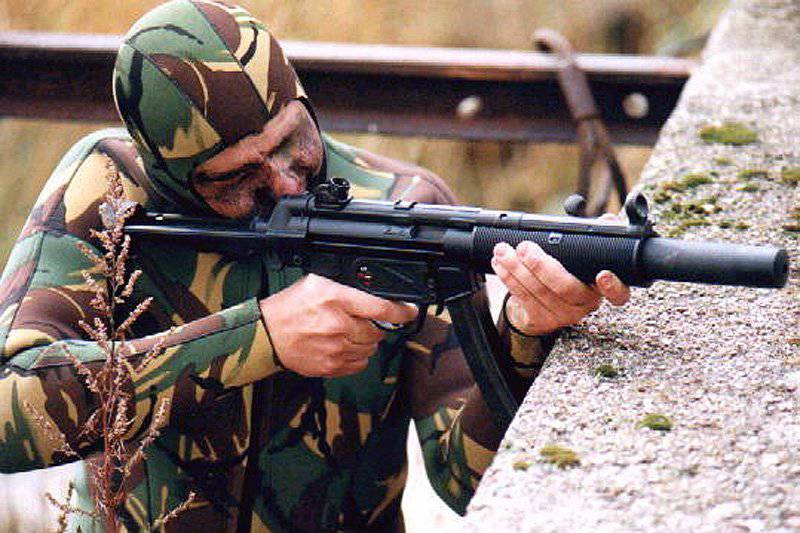
In the picture, the MP-5SD is muffled with a cartridge 9x19 SMG in the hands of a Finnish combat swimmer.
The M5.56 4 mm carbine with the SOPMOD modification kit is currently the main individual weapon of the American MTR
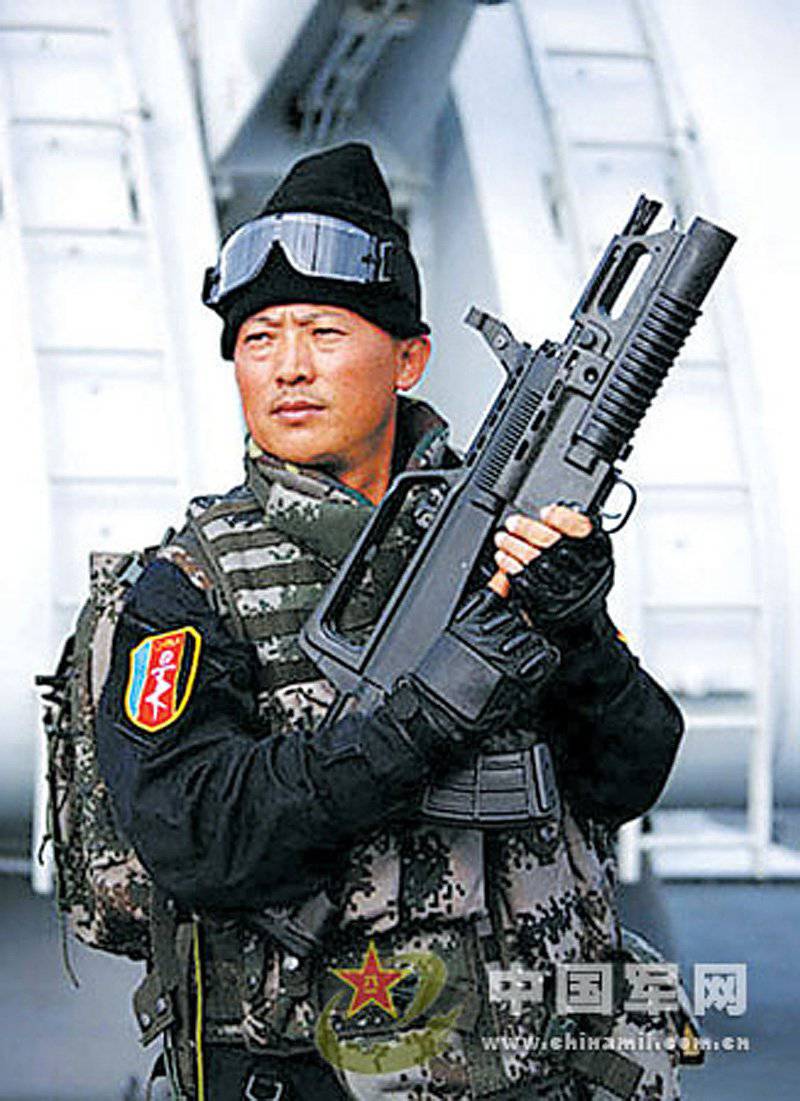
Chinese Marine Special Forces soldier armed with a Type 95 5.8x42 assault rifle with an 40-mm AG91 automatic rifle grenade launcher
A market for PDW, for example FN Herstal P90, exists, but it is not as big as expected at the beginning
SWAT is currently evaluating the further development of the PCM design, AEK-999 Badger. It has additional enhancements, such as a front handle, a sophisticated muzzle brake / flame arrester, a slightly shortened barrel (605 mm) and a special muffler.
A particularly interesting model of weapons for the MTR is the new 40-mm automatic grenade launcher Mk47 STRYKER. It was specifically designed for USSOCOM command and did not have any special requirements from the SSO. Rather, it was intended to directly replace the omnipresent standard Mk19. However, the very high cost of the weapon, as well as its special ammunition with a proximity fuse, led the Pentagon to limit its production and distribution to USSOCOM units. The only possible rationale for his admission to the SSO is that a more intensive training of special forces and the expected best fighting qualities will justify excessive costs.
Materials used:
www.monch.com Military Technology
www.fnherstal.com
www.israel-weapon.com
www.aimpoint.com
www.trijicon.com
www.heckler-koch.com
en.wikipedia.org
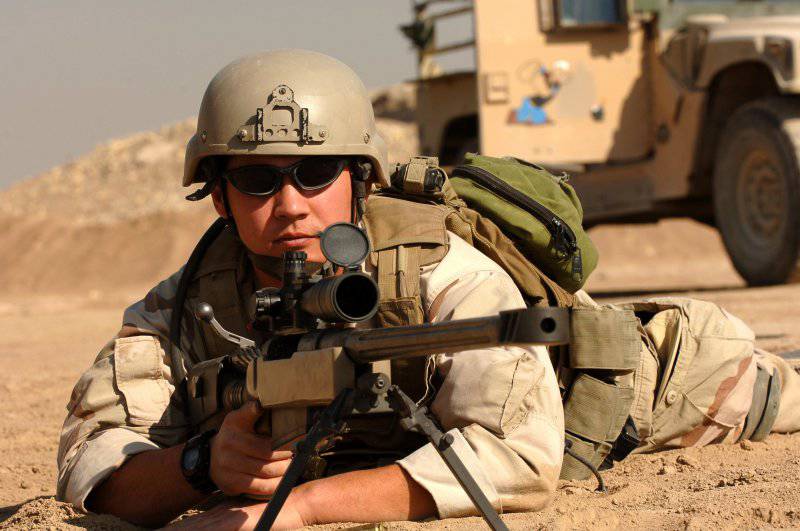
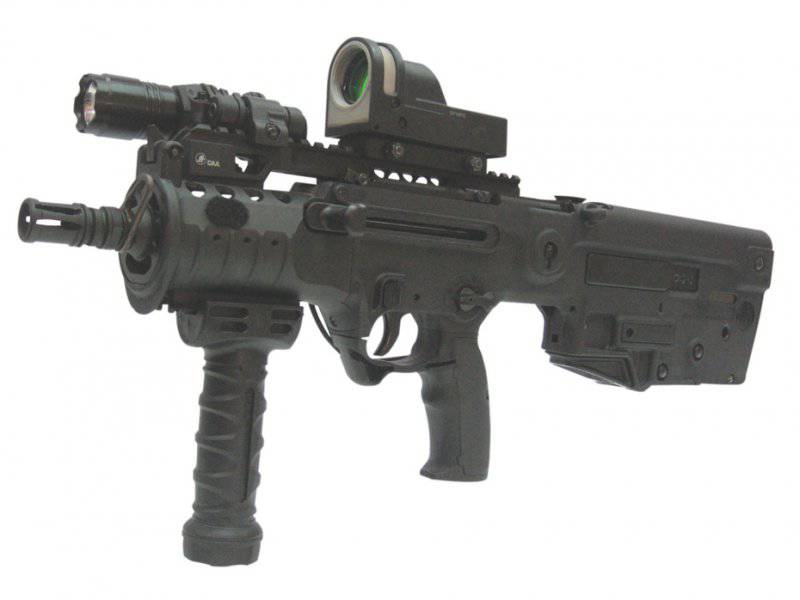
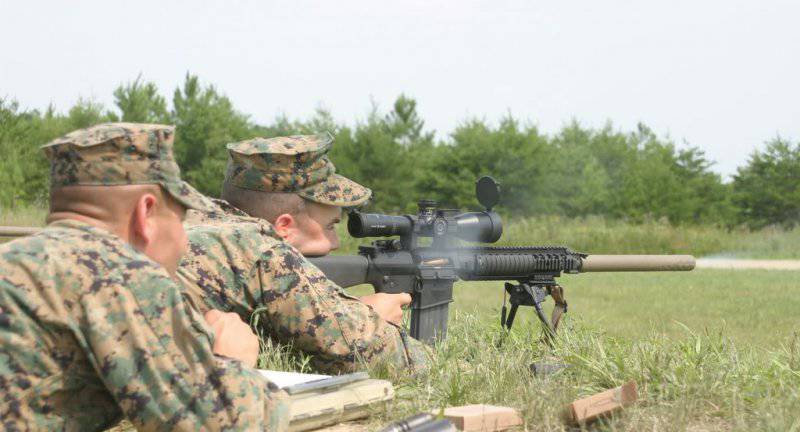
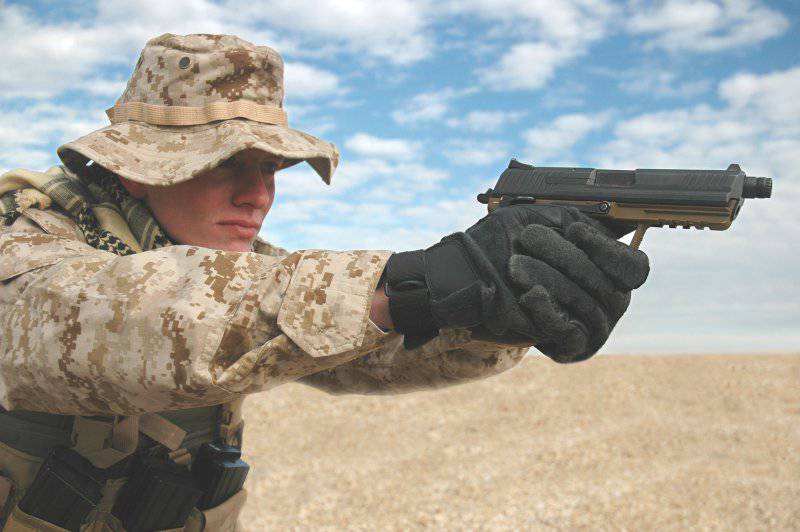
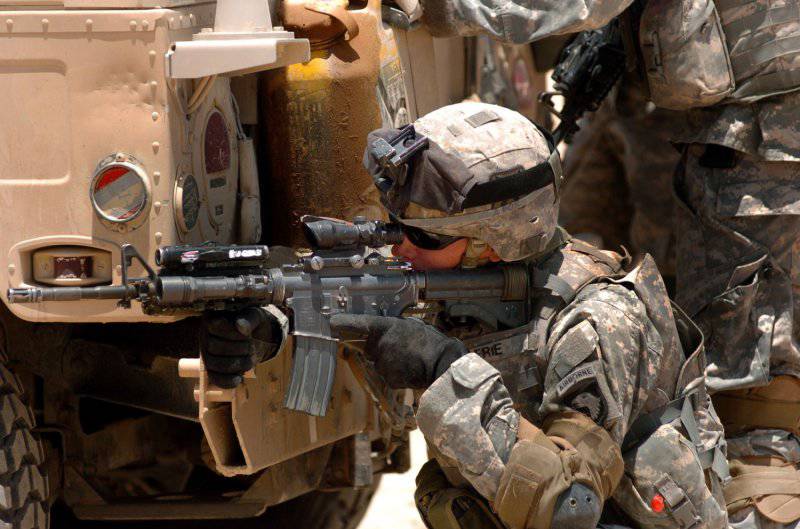
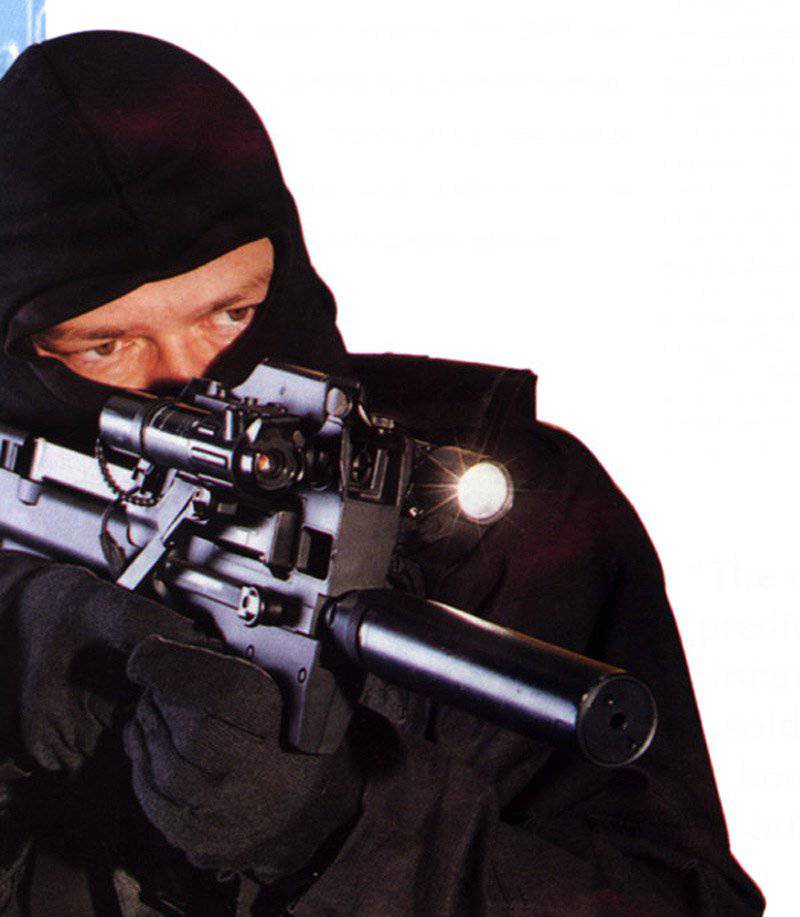
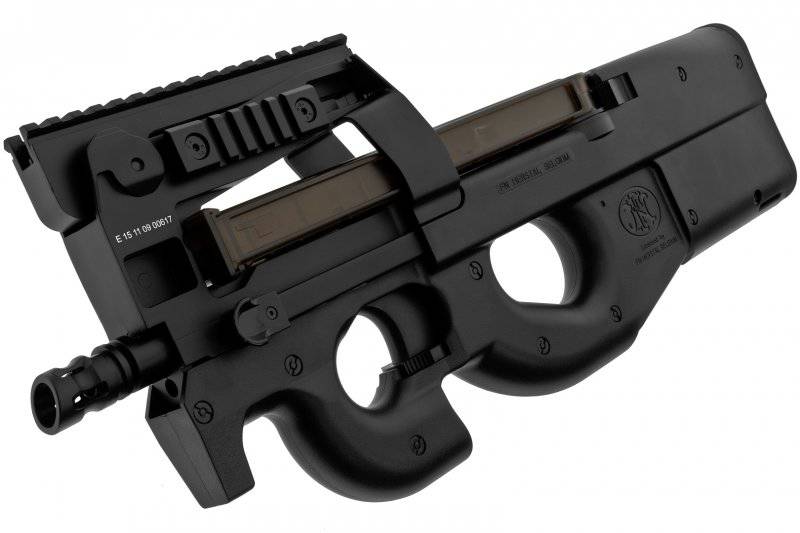
Information